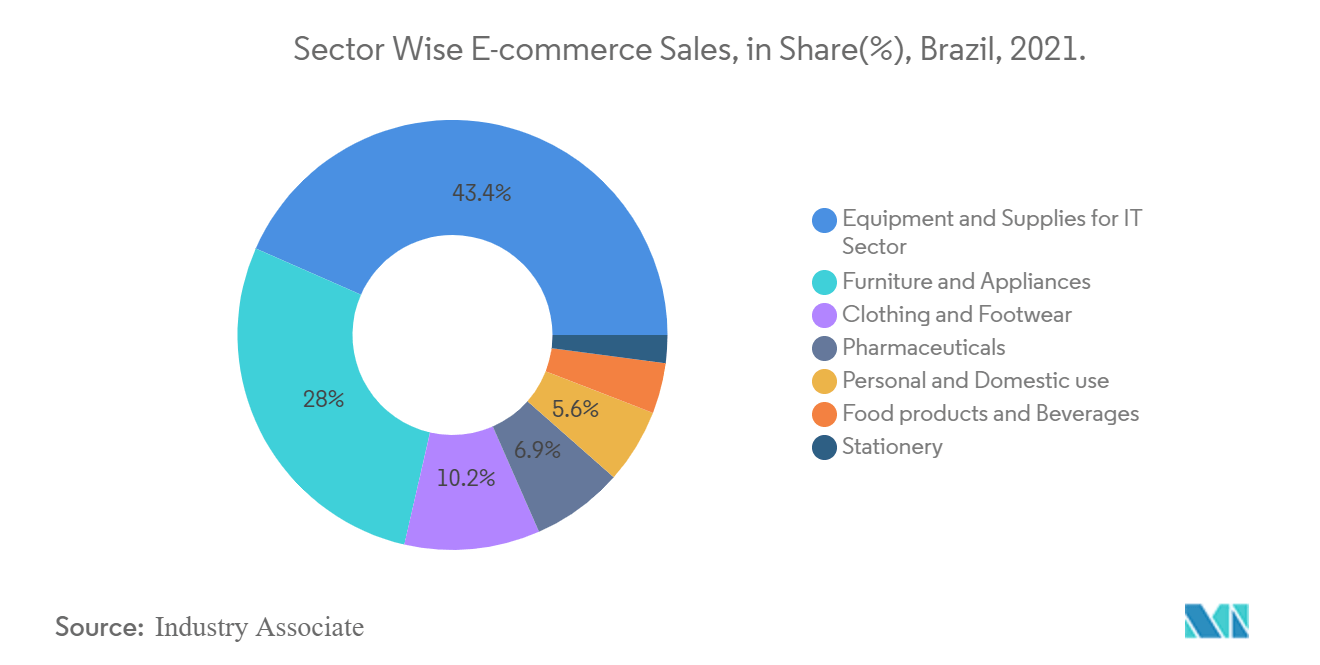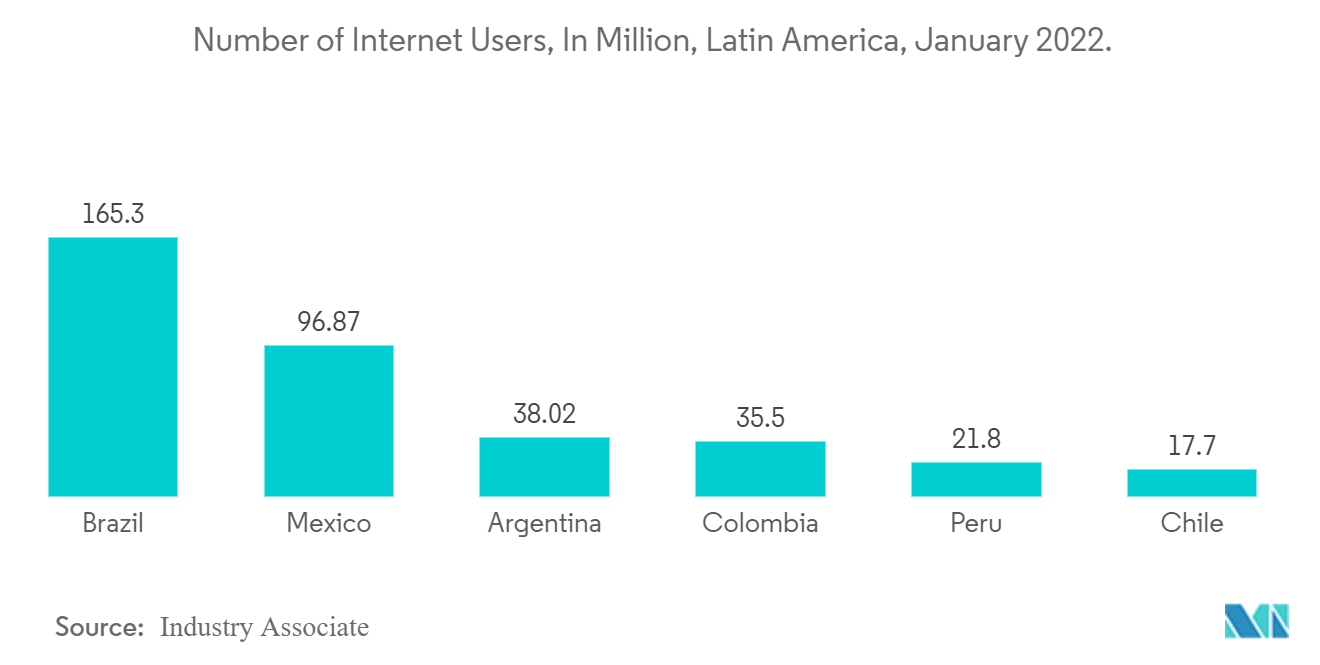Market Trends of Latin America Domestic CEP Industry
This section covers the major market trends shaping the Latin America Domestic CEP Market according to our research experts:
Growing Opportunities in Brazil to Drive the Market
Many businesses began expanding their logistics operations to take advantage of the CEP's potential for quick expansion. DHL, for example, has been growing throughout the region and investing in new technology to increase the efficiency of its supply networks. Brazilians are well-known for being among the first to accept new technology. A flourishing digital goods and services industry already exists in the country. Brazil is a fertile ground for digital goods, and it is also the region's most competitive market. The significant growth of e-commerce in 2020 is attributable to the shift of consumption from physical stores to the digital realm, which resulted in more than 17 million Brazilians having their first online buying experience, a 23% increase.
The domestic postal traffic in Mexico amounted to approximately 285.4 million items handled in 2020. This represented a decrease of around 20.5% in comparison with the number of items transported a year earlier. The Mexican Online Sales Association estimated that the domestic eCommerce business was worth USD 15.8 billion in 2020, up by 81% from 2019. In 2020, 50.7 million Mexicans used eCommerce, up by 9% from the previous year. Food delivery was the most popular online transaction in 2020, followed by fashion and beauty products. Purchases from online pharmacies and supermarkets climbed by 41% and 40%, respectively.
In 2021, Brazil experienced robust growth in e-commerce sales by 48.4% when compared to 2020, as consumers adopted online shopping in a greater proportion. In November 2021, e-commerce represented 17.9% of retail sales, a huge record since January 2018. Also, in 2021, the most popular e-commerce categories were equipment and supplies for the office, IT, and communication, with more than 43% of sales, followed by furniture and appliances, apparel, etc.

E-commerce Driving the Market
E-commerce in Argentina is emerging in the Latin American region, as the retail e-commerce sector saw a significant growth of more than 79% in 2020. Brazil and Mexico are driving Latin America's e-commerce sector. Brazil has the largest share of e-commerce in Latin America, and the market was worth USD 19.6 billion in 2020, comprising 53.5% share. In 2021, more than 188 million people opted to shop online in Latin America. Online shoppers are expected to spend more over time. The average online user spending in 2021 accounted for more than USD 220.
Rising internet penetration is driving the market. In 2021, internet penetration in Latin America was at 71%, and smartphone penetration was at 69% of the total population. Penetration rates are higher in urban areas. Brazil was the leading country, with more than 165.3 million internet users in January 2022, followed by Mexico and Argentina. In 2022, Mexico's internet users made the highest e-commerce purchasing, as more than 64% of internet users purchased consumer goods via e-commerce platforms. Also, more than 39% of people order groceries via online stores.

